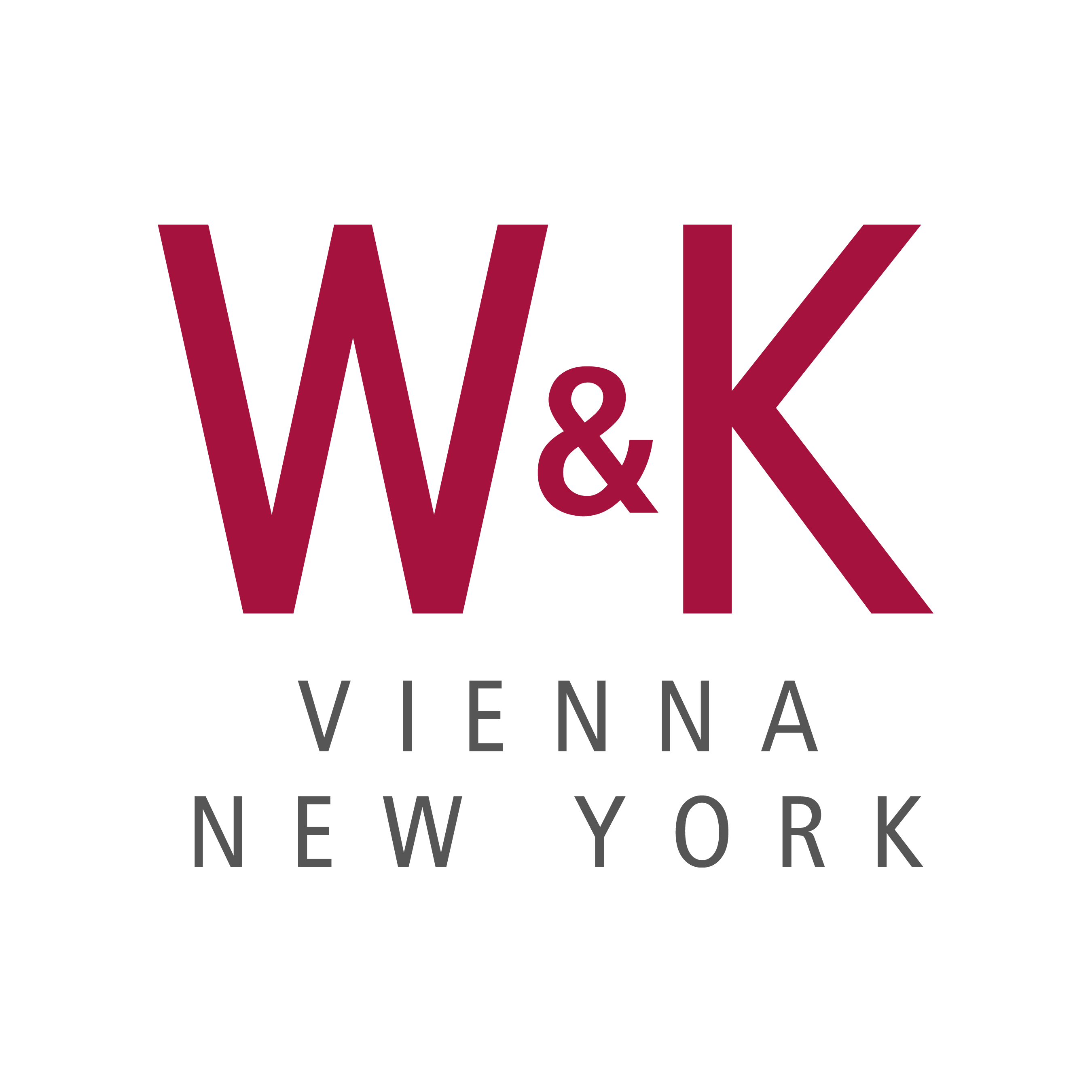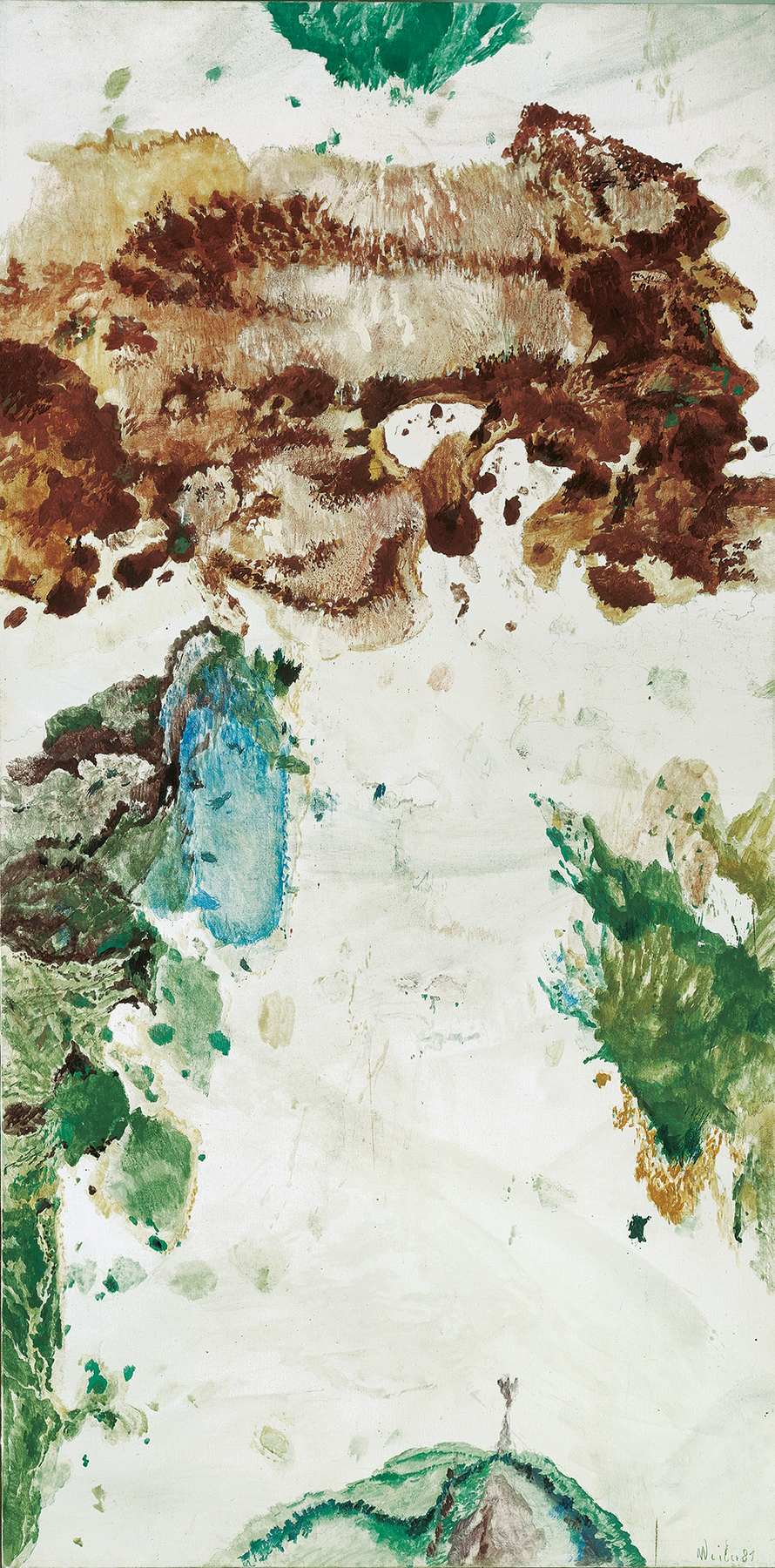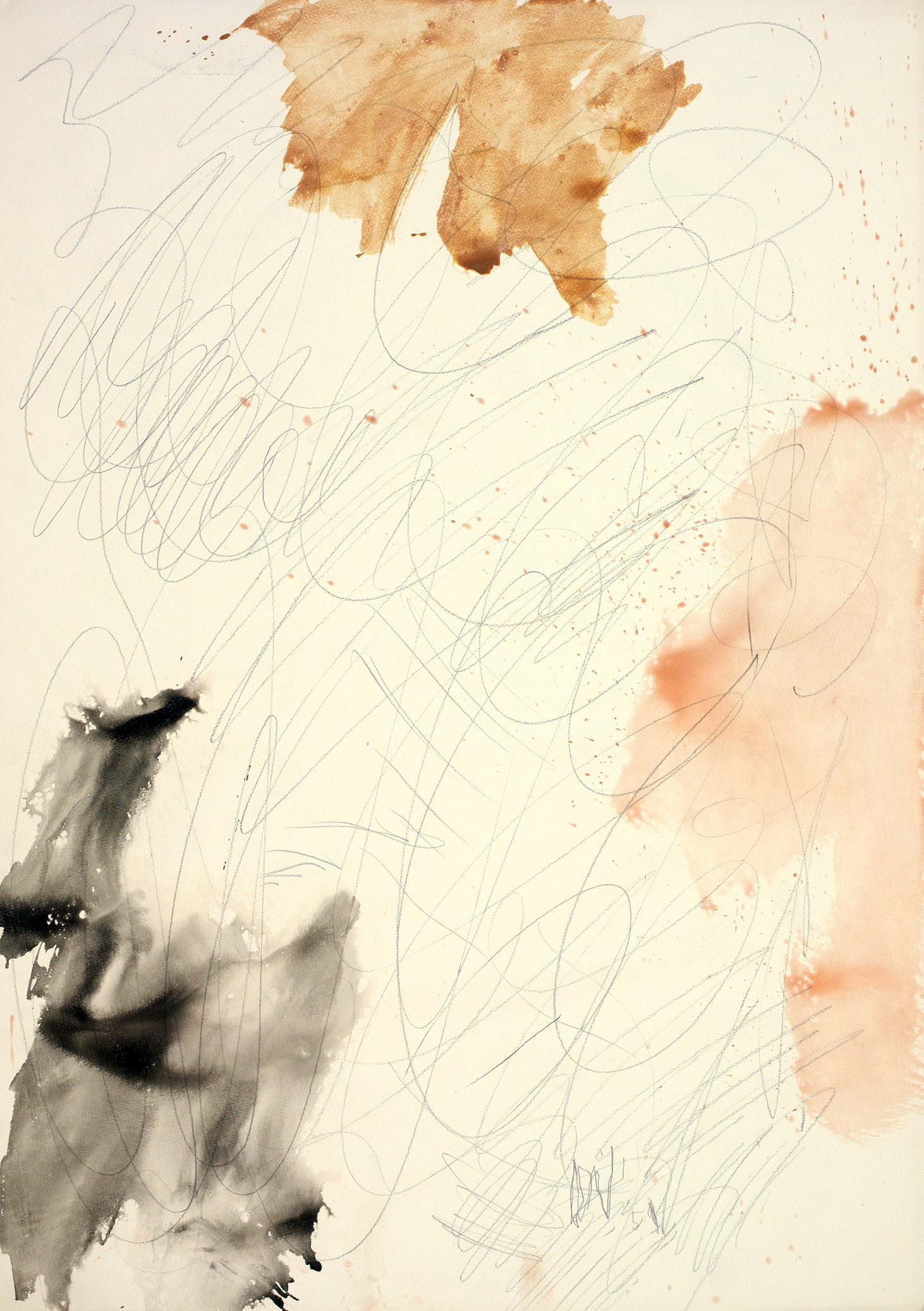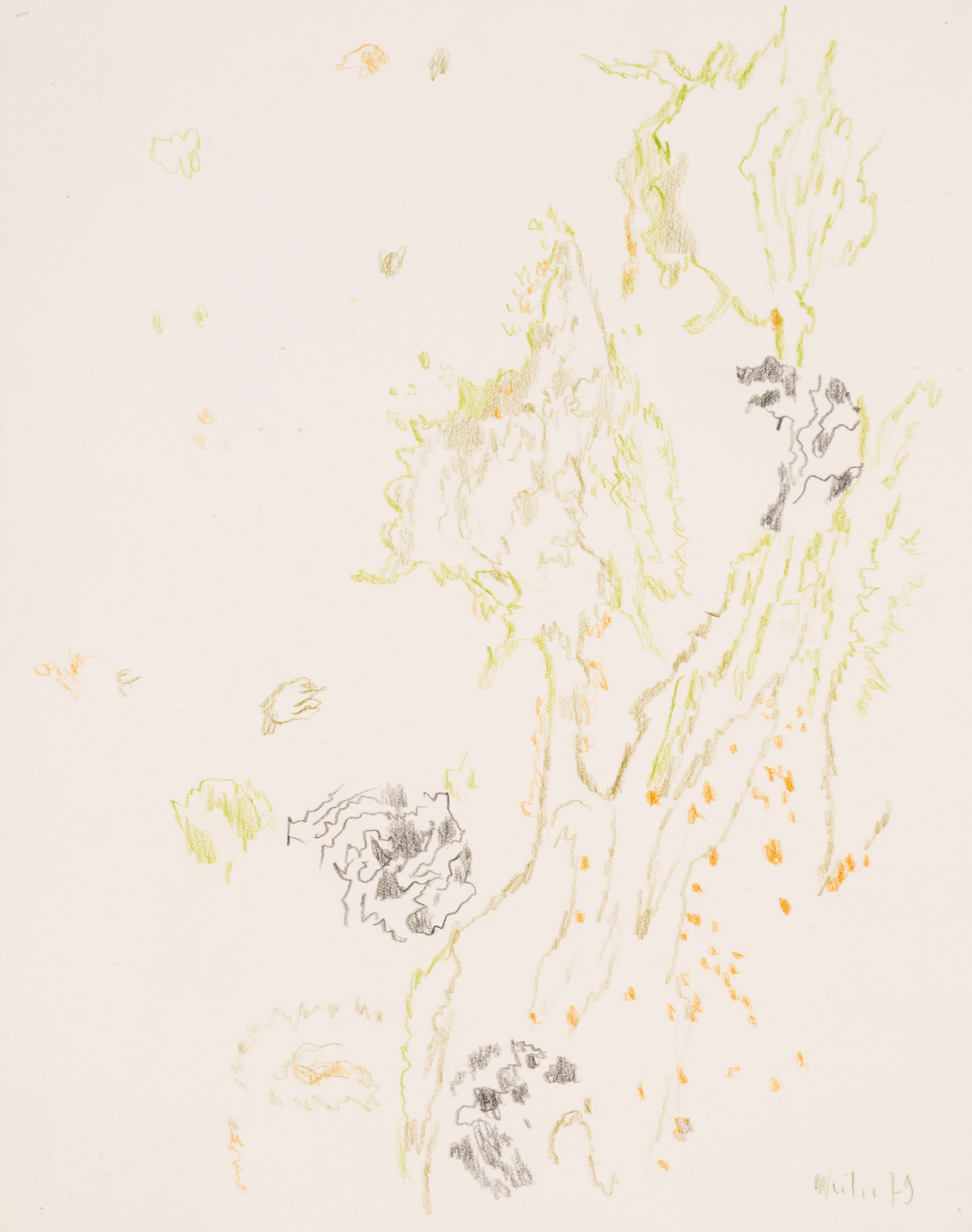W&K – Wienerroither & Kohlbacher
Himmelsschauspiel
1981
Eitempera auf Leinwand
230 x 115 cm
© W&K - Wienerroither & Kohlbacher
Formen von außen
1959
Bleistift, Tusche, Eitempera und Aquarell auf Papier
88 x 62,6 cm
€ 22.000
© W&K - Wienerroither & Kohlbacher
o.T.
1979
Farbkreiden auf Papier
31,2 x 24,8 cm
€ 9.000
© W&K - Wienerroither & Kohlbacher
Max Weiler
Max Weiler (1910 – 2001) was an artist whose innovative and versatile works make him one of the important representatives of abstract art in Austria. His artistic oeuvre spans a period of almost 70 years, whereby he continuously retains his basic experience of capturing the spiritual content of nature.
The solo presentation at SPARK 2024 is dedicated to two important periods of the artist’s work. On the one hand, we are presenting works from the late 1950s, which reflect Weiler’s exploration of the abstract informal and were part of his presentation at the XXX. Biennale in Venice in 1960. On the other hand, we are showing works from the late 1970s and early 1980s, which are characterized by a particular sovereignty and lightness. In his late work, the artist drew on the abundance of everything he saw and dreamed of. His old conviction that nature and spirituality are essentially related gains new persuasiveness in his late work. The painting „Himmelsschauspiel“ (1981) is particularly impressive. The viewer sees this reality not only in a frontal distance, as we know it from his early religious work. We now see this experience of nature as if it were an event in progress.
Biography
Max Weiler, one of the outstanding personalities of Austrian painting of the 20th century, was born on 27 August 1910 in Absam near Hall in Tyrol as the son of a judge. His impressive, seventy-year intensive work is essentially about landscape and nature as seen and perceived reality.
In 1925 Weiler joined the youth movement „Bund Neuland“, whose enthusiasm for nature combined with spiritual ideals of renewal became a fundamental experience for him. In 1930 he was accepted into the painting school of Prof. Karl Sterrer at the Vienna Academy of Fine Arts, but returned to Tyrol as a drawing teacher when the war broke out. In 1945 Max Weiler received his first major public commission with the decoration of the Theresienkirche on the Hungerburg above Innsbruck, which, however, led to a scandal due to the interpretation of the pictures. Other important public commissions include the apse of the Friedenskirche in Linz-Urfahr (1951), the counter hall of Innsbruck Central Station (1954/55) and the murals in the Casino Innsbruck (1992/93). In 1960 Weiler was representing Austria at the XXX Venice Biennale. Between 1964 and 1981 he was appointed professor of painting at the Academy in Vienna. In his later years he undertook extensive travels and numerous major exhibitions took place both nationally and internationally. Max Weiler has received many prizes and honours during his lifetime, including the Austrian Medal of Honor for Science and Art (1979) and the Great Golden Medal of Honor with Star of the Republic of Austria (2000).
W&K – Wienerroither & Kohlbacher
In 1993 W&K opened its doors in Vienna’s 1st district. Twenty years later, in 2013, W&K joined forces with renowned New York based Shepherd Gallery to regularly present its program to the American public. Through a meticulously selected collection, focusing on high-quality abstract and body related Austrian and international art, the gallery prides itself in helping to enrich important collections for both institutions and private collectors worldwide.
W&K’s vast stock consists of art works by national and international artists, such as Gustav Klimt, Egon Schiele, Ernst Ludwig Kirchner, Käthe Kollwitz, Lyonel Feininger, Hermann Nitsch, Arnulf Rainer, Elke Silvia Krystufek, Rudolf Polanszky, Max Weiler, Günter Brus, and Franz West.
Many of its works have joined major museums such as the Metropolitan Museum in New York, the Art Institute of Chicago, Chimei Museum in Taiwan, Museum Folkwang, Albertina, Belvedere, Leopold Museum, Fundación Juan March in Madrid, Dallas Museum of Art, as well as numerous private collections around the world.

+4315339977
Sascha Worrich
+4315339977
Max Weiler
Max Weiler (1910 – 2001) was an artist whose innovative and versatile works make him one of the important representatives of abstract art in Austria. His artistic oeuvre spans a period of almost 70 years, whereby he continuously retains his basic experience of capturing the spiritual content of nature.
The solo presentation at SPARK 2024 is dedicated to two important periods of the artist’s work. On the one hand, we are presenting works from the late 1950s, which reflect Weiler’s exploration of the abstract informal and were part of his presentation at the XXX. Biennale in Venice in 1960. On the other hand, we are showing works from the late 1970s and early 1980s, which are characterized by a particular sovereignty and lightness. In his late work, the artist drew on the abundance of everything he saw and dreamed of. His old conviction that nature and spirituality are essentially related gains new persuasiveness in his late work. The painting „Himmelsschauspiel“ (1981) is particularly impressive. The viewer sees this reality not only in a frontal distance, as we know it from his early religious work. We now see this experience of nature as if it were an event in progress.
Biography
Max Weiler, one of the outstanding personalities of Austrian painting of the 20th century, was born on 27 August 1910 in Absam near Hall in Tyrol as the son of a judge. His impressive, seventy-year intensive work is essentially about landscape and nature as seen and perceived reality.
In 1925 Weiler joined the youth movement „Bund Neuland“, whose enthusiasm for nature combined with spiritual ideals of renewal became a fundamental experience for him. In 1930 he was accepted into the painting school of Prof. Karl Sterrer at the Vienna Academy of Fine Arts, but returned to Tyrol as a drawing teacher when the war broke out. In 1945 Max Weiler received his first major public commission with the decoration of the Theresienkirche on the Hungerburg above Innsbruck, which, however, led to a scandal due to the interpretation of the pictures. Other important public commissions include the apse of the Friedenskirche in Linz-Urfahr (1951), the counter hall of Innsbruck Central Station (1954/55) and the murals in the Casino Innsbruck (1992/93). In 1960 Weiler was representing Austria at the XXX Venice Biennale. Between 1964 and 1981 he was appointed professor of painting at the Academy in Vienna. In his later years he undertook extensive travels and numerous major exhibitions took place both nationally and internationally. Max Weiler has received many prizes and honours during his lifetime, including the Austrian Medal of Honor for Science and Art (1979) and the Great Golden Medal of Honor with Star of the Republic of Austria (2000).
W&K – Wienerroither & Kohlbacher
In 1993 W&K opened its doors in Vienna’s 1st district. Twenty years later, in 2013, W&K joined forces with renowned New York based Shepherd Gallery to regularly present its program to the American public. Through a meticulously selected collection, focusing on high-quality abstract and body related Austrian and international art, the gallery prides itself in helping to enrich important collections for both institutions and private collectors worldwide.
W&K’s vast stock consists of art works by national and international artists, such as Gustav Klimt, Egon Schiele, Ernst Ludwig Kirchner, Käthe Kollwitz, Lyonel Feininger, Hermann Nitsch, Arnulf Rainer, Elke Silvia Krystufek, Rudolf Polanszky, Max Weiler, Günter Brus, and Franz West.
Many of its works have joined major museums such as the Metropolitan Museum in New York, the Art Institute of Chicago, Chimei Museum in Taiwan, Museum Folkwang, Albertina, Belvedere, Leopold Museum, Fundación Juan March in Madrid, Dallas Museum of Art, as well as numerous private collections around the world.



